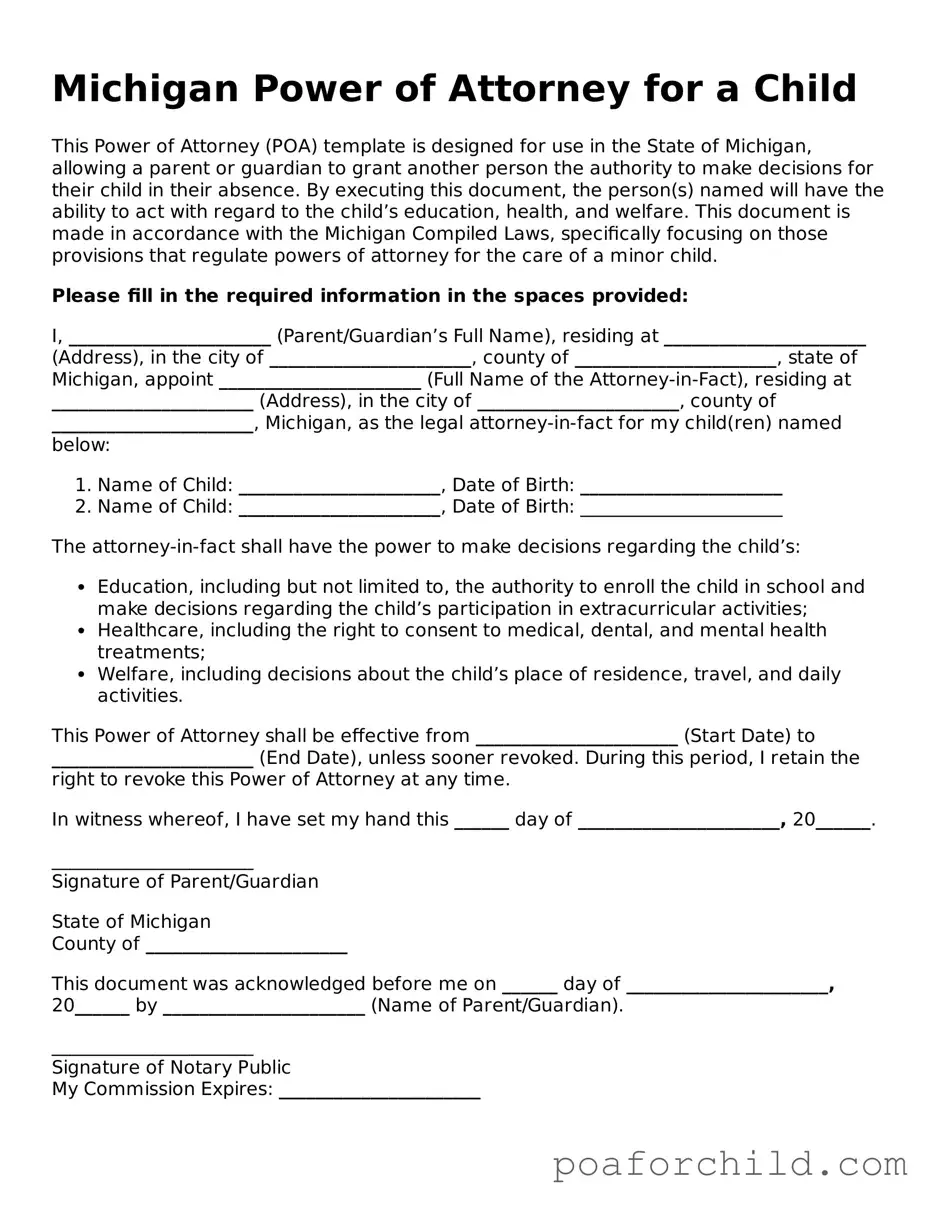Detailed Guide for Using Michigan Power of Attorney for a Child
Filling out a Michigan Power of Attorney for a Child form is a thoughtful step towards ensuring a child's welfare during times when the primary guardians cannot be present due to various reasons, such as illness, military deployment, or travel. This document gives another person the legal right to make certain decisions for the child, touching on aspects like education, healthcare, and general welfare. It's a process that requires precision and clear understanding to ensure the child's best interests are safeguarded throughout the duration the document is in effect. Here's a step-by-step guide to help you accurately complete this form:
- Gather necessary information: Before you start filling out the form, collect all the required details. This includes the full legal names and addresses of the current legal guardians or parents, the full name and birthdate of the child, and the full name and address of the person being granted the Power of Attorney.
- Identify the form: Ensure you have the correct version of the Michigan Power of Attorney for a Child form. This form may be available on various legal websites, or directly from a legal advisor or a state office.
- Fill in the introductory section: The form begins by requiring the names of the child’s current legal guardians or parents. Enter each name clearly and without error.
- Detail the child's information: Enter the child’s legal name and date of birth in the designated sections. This helps in clearly identifying the child in legal terms.
- Specify the Attorney-in-Fact: This is the person who will be given the Power of Attorney. Input their full legal name and address. Be sure this person is trustworthy and capable of making responsible decisions for the child.
- Define the powers granted: The form will specify the areas in which the Attorney-in-Fact can make decisions. These typically include health care, education, and general welfare. Read each section carefully to understand the powers being granted.
- Set the duration: Power of Attorney can be set for a specific time or under certain conditions. Fill in the start and end dates or describe the conditions under which the Power of Attorney will be effective.
- Signatures: The form must be signed by the current legal guardians or parents in front of a notary public. Some states require the presence of witnesses. Check the specific requirements for Michigan to ensure compliance.
- Notarization: The form becomes legally binding once it is notarized. The notary public will fill in their section, validating the identities of the signatories.
- Distribute copies: Make several copies of the notarized form. Provide one to the appointed Attorney-in-Fact, keep a copy for your records, and consider giving a copy to the child’s healthcare providers or school.
Once the Michigan Power of Attorney for a Child form is completed, it's a good practice to review it periodically to ensure it still aligns with the child's best interests and the family's situation. Changes in family dynamics, relocation, or the child's needs may necessitate updating the document. Being proactive and prepared allows you to provide uninterrupted care and support for the child, regardless of unforeseen circumstances.
